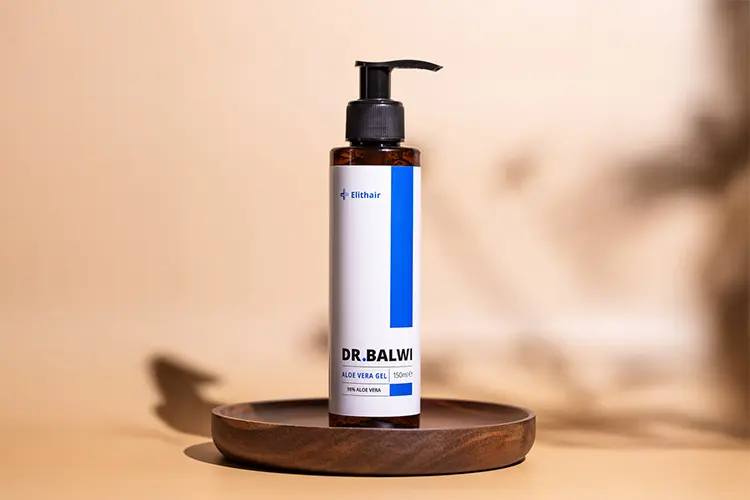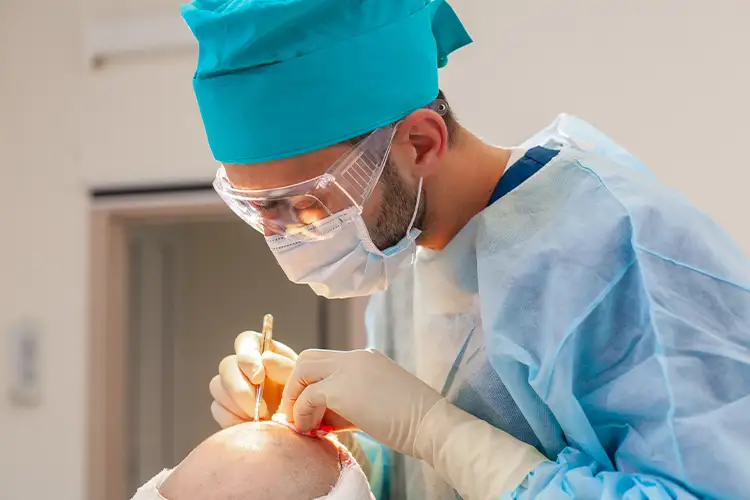
Hair Transplantation: Results & Decisions After 10 Years
Many people who opt for a hair transplant report increased self-confidence, greater zest for life, and a newfound openness shortly after the procedure. But what about after five, eight, or even ten years? How much of that newfound confidence remains – and what changes?
Experience shows that those who opt for a high-quality hair transplant at a specialised clinic usually still benefit from a stable, natural-looking head of hair even after a decade. In this article, we’ll be going over what you can expect ten years after your procedure.
- A Lasting Result – But Not the End of the Story
- What do Patients Report?
- Changing Self-image: How Emotional Responses Develop Over Time
- Long-Term Care: What Your Hair Still Needs After 10 Years
- How Ageing Changes Our Hair
- Scientifically Proven: Long-Term Success is No Accident
- Technological Progress: The Benefits of Today’s Transplants
- Conclusion: A Decision With Long-Term Consequences
- FAQs
A Lasting Result – But Not the End of the Story
First, the good news: Transplanted hairs usually come from DHT-resistant areas of the back of the head, and they retain this genetic insensitivity even after transplantation. This means they generally do not fall out again.
At the same time, long-term studies and patient reports show:
- The hair pattern in the treated areas often remains stable for many years.
- Further hair loss processes in the untreated area (e.g., at the back of the head or the crown) can still occur.
- In such cases, some patients opt for a second hair transplant after several years to harmonise the overall appearance.
What do Patients Report?
Numerous documented cases exist – some spanning several years. One example is Michael W. Even five years after the procedure, his hair still looks thick and natural. His conclusion: “I feel like I look 10 years younger now, simply wow!”
Other long-term reports also show:
- The hair structure ages naturally and can turn grey like normal hair.
- With proper care, the result remains aesthetically pleasing for a long time.
- Many patients say that the decision to have a hair transplant was a turning point in their lives, not only visually, but emotionally.
Changing Self-image: How Emotional Responses Develop Over Time
Many patients report that their self-esteem improved significantly immediately after a hair transplant. But what about years later? Anecdotal evidence shows that the strengthened self-image usually remains stable for years – often leading to a new sense of comfort in one’s own skin.
Some describe a real habituation effect: The former “problem” of hair loss increasingly fades into the background, leading to a greater sense of ease in everyday life.
Long-Term Care: What Your Hair Still Needs After 10 Years

Transplanted hair usually grows permanently, but it still requires care. To maintain the natural-looking results in the long term, experts recommend gentle hair care with mild, pH-neutral shampoos. The scalp should also be cleansed regularly and moisturised as needed.
Strong UV radiation, harsh styling products, or frequent straightening can damage the hair structure over time. Those who want to enjoy their new hair in optimal condition for as long as possible should therefore continue to use gentle care products, even years later.
How Ageing Changes Our Hair
An often underestimated factor is that transplanted hair is also subject to the natural ageing process. Just like the rest of the hair on the head, it can lose its color vibrancy, turn grey, or become finer in structure over time.
It is important to note that these changes are normal and also affect the newly transplanted areas. Further treatment is usually unnecessary in such cases – provided the overall appearance remains harmonious.
Scientifically Proven: Long-Term Success is No Accident

Long-term observations confirm that, in most cases, the results of professionally performed hair transplants remain stable even after many years. The transplanted hair follicles retain their genetic resistance to DHT and behave like the original donor hair.
Although there are individual differences, such as lifestyle, care, or genetic predisposition, overall, a hair transplant is a medically sound, long-term effective solution for permanent hair loss.
When Does a Second Transplant Make Sense?
After about eight to ten years, it may be useful for some affected individuals to supplement the results again, for example, if:
- further hair loss has developed in the non-transplanted area,
- Their personal ideal of beauty has changed,
- or minor corrections may be desired (e.g., hairline, density).
Thanks to modern techniques such as FUE or DHI, a second treatment is usually possible without any problems, especially if there is still enough donor hair available.
Technological Progress: The Benefits of Today’s Transplants

Hair surgery has made enormous progress in recent years. Those who had their transplant eight, nine, or even ten years ago already benefited from established procedures, but today’s methods, such as the DHI technique or the FUE method, offer even greater precision, naturalness, and comfort.
Conclusion: A Decision With Long-Term Consequences
Ten years after a hair transplant, the long-lasting effects of this procedure remain evidennt – medically, aesthetically, and psychologically. Those who opt for professional treatment early on can enjoy a natural, confident appearance for years to come.
And if you decide you want to change things further in the future? Then modern hair surgery offers solutions that blend harmoniously with the existing results.
FAQs
How long does it take for transplanted hair to reach its final appearance?
Most transplanted hair reaches its final appearance after 12 to 18 months. Initial shedding is normal, followed by gradual regrowth. Density, texture, and overall naturalness continue to refine throughout the first year.
Can lifestyle factors influence how the hair looks after 10 years?
Yes. Smoking, poor diet, chronic stress, and inadequate scalp care can affect the health and appearance of both transplanted and native hair. Patients who maintain a healthy lifestyle generally enjoy more durable and visually pleasing long-term results.
Does medication such as finasteride or minoxidil help preserve the surrounding hair?
Many specialists recommend finasteride or minoxidil to stabilise further hair loss in non-transplanted areas. While not mandatory, these medications can help maintain an even, harmonious hair pattern over the years.
Is it possible for the donor area to thin over time?
Yes, although donor hair is typically DHT-resistant, mild thinning can occur due to natural ageing. This is usually subtle and does not compromise the original transplant unless there was very limited donor capacity initially.
Will a hair transplant look natural as the patient ages?
A well-planned transplant should age gracefully. Skilled surgeons design the hairline and density with long-term changes in mind, ensuring the result remains natural even as the patient’s facial features and hair characteristics mature.
Can transplanted hair be dyed or styled like normal hair?
Absolutely. Once fully grown, transplanted hair behaves like any other hair. It can be dyed, curled, straightened, or cut without special restrictions—although gentle, non-damaging techniques are always recommended.
Are there risks of scarring becoming more visible over the years?
With modern FUE and DHI techniques, scarring is minimal and usually remains inconspicuous. However, significant thinning in the donor area could make tiny extraction points slightly more noticeable, though this is uncommon.
What happens if someone experiences extensive new hair loss after 10 years?
If genetic hair loss progresses significantly, options include:
-
medication to slow further loss,
-
a follow-up transplant,
-
adjustments to hairstyle,
-
or non-surgical solutions such as microneedling or scalp micropigmentation.
A consultation helps determine the most appropriate approach.
Do patients need regular medical check-ups after their transplant?
Routine medical check-ups are not typically required once healing is complete. However, some clinics offer optional annual reviews to monitor natural hair changes and advise on long-term care.
Is there an age at which a second transplant is not recommended?
There is no strict upper age limit, but suitability depends on general health, donor availability, and realistic expectations. Many patients in their 50s and 60s successfully undergo secondary procedures with excellent results.


